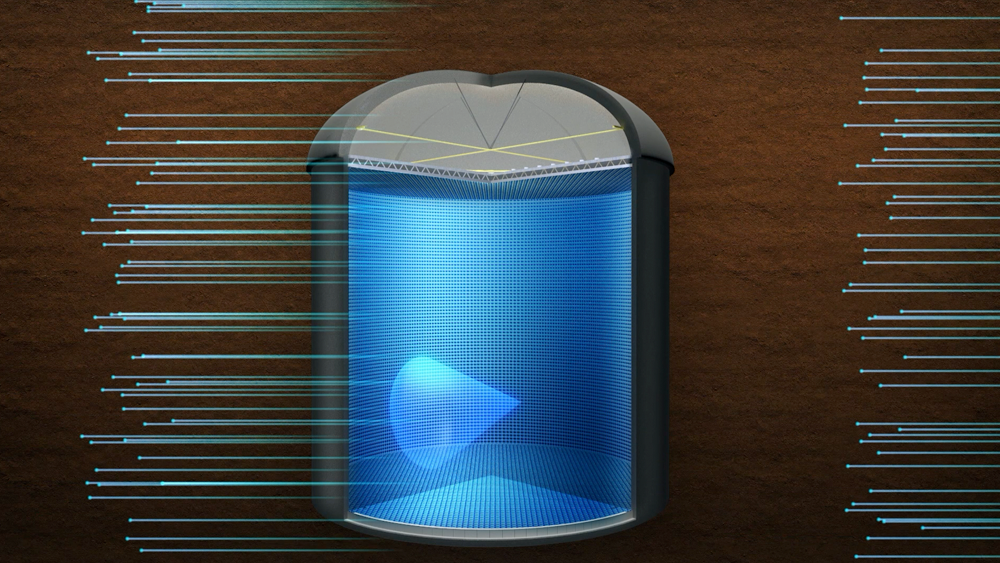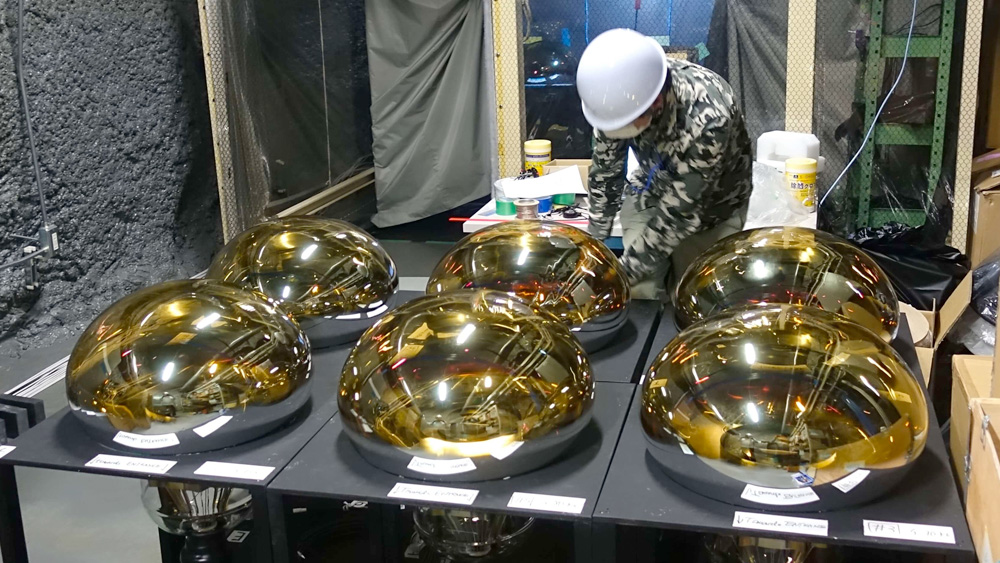Why Japan is Hollowing out a Mountain
- Youtube Views 3,465,900 VIDEO VIEWS
Video narrated and hosted by Fred Mills.
SOMETHING huge is being constructed in a remote corner of Japan. It’s costing over half a billion dollars and is the biggest of its kind in the world. It’s been in development for over 20 years, it's over 80 metres high and nearly 70 metres wide.
But you’re not going to spot it very easily because this enormous structure is hidden deep in the landscape – quite literally – and when it’s finished it’ll look like nothing else on earth – well, almost.
Our universe is made up of tiny subatomic particles, such as quarks, bosons and the smallest of them all: neutrinos. Neutrinos act in strange ways. They fly through space, but don’t interact with other matter. Billions of them move through your body all the time, without having any effect on you at all. If we understood how that happens, it could fundamentally change how we think about the universe.

Above: The universe is made up of tiny sub-atomic particles, such as neutrinos.
But, as you'd probably guess of the smallest particles in the universe, they're quite hard to spot. One way of detecting them is by smashing larger particles together at high speeds and recording the reaction. That’s what’s happening at the large hadron collider in CERN.
Another way to observe them is just by listening, which is about as easy as it sounds. Ideally, you need somewhere remote, quiet and very peaceful. Fortunately, Japan is pretty good at that.
In the small town of Kamioka, nestled in the Japanese Alps lies Mt. Nijuugo, home to the Hyper-Kamiokande — a USD $600M science experiment led by the University of Tokyo and supported by researchers from 21 countries.

Above: A cross section of how the Hyper-Kamiokande will appear once complete. Image courtesy of the University of Tokyo.
When complete, it will be the largest neutrino observatory in the world and a breathtaking feat for Japan’s construction industry. But as incredible as the Hyper-Kamiokande is, it’s actually not the first of its kind; in fact it's not even the first in the area.
The area surrounding Kamioka is known for its zinc mining industry, and it was the expertise of a local mining company which back in 1983 helped construct the first Kamioka Nuclear Decay Experiment, or Kamiokande for short. The success of that gave rise to the Super-Kamiokande in 1996 and the Hyper-Kamiokande under construction today.
The latest iteration of detectors consists of a huge cylinder, carved into mountain rock, and accessed by an approach tunnel at the top and a secondary tunnel at the base. At 94 metres high and 69 metres wide, it’s big enough to fit an entire Boeing 747 standing on its end.
Plans for the Hyper-Kamiokande go back to 1999, then in May 2021, following more than two decades of development, work began on the access tunnel. Using a drill and blast method, it took just nine months to excavate the two-kilometre approach tunnel, which was then sprayed with concrete to create a smoother and more stable surface.
This approach tunnel leads to the centre of what will become the roof of the observatory. As the observatory sits 600-metres below the mountain peak, a domed structure was created, which was then reinforced by a steel truss to reinforce against the enormous weight of the rock above it.
This was completed in October 2023 and now the team have begun the next stage of the project, blasting down through 71 metres of rock to create the enormous cavern the observatory will sit in.

Above: The completed dome structure. Image courtesy of the University of Tokyo.
The rock is hard work for the construction crews, but it’s what makes the site perfect for spotting neutrinos. The density of the rock is the equivalent of the observatory sitting 1.7 kilometres below the surface of the ocean. That’s no problem for the neutrinos, which can pass through entire planets with ease, but it provides excellent insulation from cosmic rays and other background radiation, which could ruin this experiment.
Drilling is due to complete in 2025 but at that point there’s still a long way to go before it can detect a single subatomic particle. First, the inside of the cavern will be lined with two layers of concrete and crucially a waterproof layer. That’s because this cavern is set to become the largest tank of water in the world.
Once fully watertight, 260 million litres of water will be pumped into this enormous cavern — that’s nearly four and a half times larger than the world's largest aquarium at Seaworld Abu Dhabi.

Above: Neutrinos will pass through the Hyper-Kamiokande, creating Cherenkov radiation. Image courtesy of the University of Tokyo.
When neutrinos pass through the tank, occasionally they’ll collide with electrons, giving off a weak glow, known as Cherenkov radiation. It's this radiation that the structure is designed to observe, but to do that it needs another crucial piece of equipment.
40,000 photodetectors are being constructed to line the inside of the cavern. Once installed, these sensors will act as a giant camera that will register the faint traces of light given off by the Cherenkov radiation.

Above: A series of photodetectors being manufactured for Hyper-Kamiokande. Image courtesy of the University of Tokyo.
The photodetectors in Super-Kamiokande are so sensitive — a single one could detect the light of a flashlight being used on the moon. The sensors being made for Hyper-Kamiokande are nearly twice as sensitive as this and have also been manufactured to withstand the enormous weight of 260,000 tonnes of water.
Construction is expected to fully complete in 2026 and the Hyper-Kamiokande should start detecting neutrinos and performing other experiments by 2027.
As cool as all of this is though, you might be forgiven for thinking “What has particle physics ever done for me?” Well, for a starter, if you’ve ever had a medical scan or had a tumour diagnosed, you have particle physics to thank for that.
The discipline has also contributed to medical breakthroughs which have given us treatments for AIDS and countless other medicines. It’s also led to greater understanding of fluid dynamics, which helps in the construction of long-distance pipelines and gives us more accurate weather forecasts, and let’s not forget it was for a group of particle physicists that Tim Berners Lee developed a new system for quickly and efficiently sharing information – a system which is enabling you to read this very article.
It’s probably fair to say this is one science experiment which is definitely going to live up to the hype.
Video narrated and hosted by Fred Mills. Additional footage and images courtesy of Kamioka Observatory, ICRR, The University of Tokyo / NHK Enterprises, Inc.
We welcome you sharing our content to inspire others, but please be nice and play by our rules.








